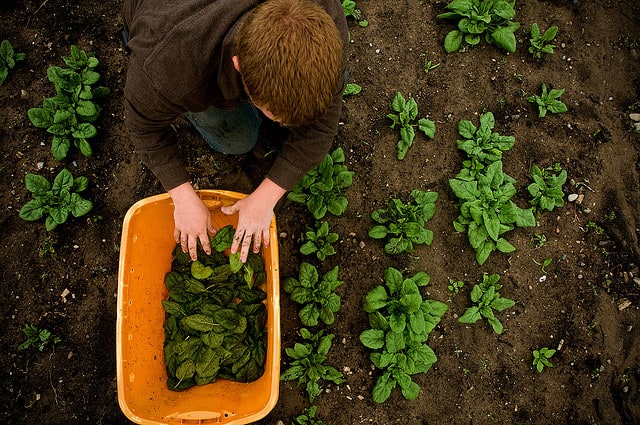Switching from traditional to organic lawn care makes sense, if you want to create a safer and more environmentally friendly yard space. Organic lawn care can also save you money, in the long term. The first thing you need to think about, if you are thinking about going organic, is the condition of your lawn right now.
If you have a lawn that is in good condition, is easy to manage and has few weeds, you should be able to switch to organic lawn care easily. However, if the turf is tough and weeds are a problem, it may be best to grow an organic lawn from scratch.
Why change to an organic lawn?
You may be wondering if it’s really worth switching to organic lawn care in the first place. If you are happy with using the traditional methods you are used to, this is an understandable question. However, just because you are used to something this does not make it the best option. The fact is that chemicals used in regular fertilizers and pesticides have been shown to cause health problems. They can also damage the environment, especially if they get into the water system.
There is no doubt that using organic lawn care methods can have a beneficial effect on people living in the property and on the neighboring environment. Organic care is also more affordable in the long term as an organic lawn should eventually be able to use natural nutrients to help it grow. Another benefit of an organic lawn is that it usually does not require any manual aeration. Worms do all of that work for you as they remain untouched by chemicals, and healthy.
You can see why switching to an organic lawn is a good idea; but how do you make a start?
Assessing the quality of soil
In order for an organic lawn to thrive, the soil needs to be of good quality. If the quality of the soil is poor, organic fertilizers and composts might need to be used to improve it, to begin with. A good quality soil should contain around 3-6% of organic matter. This is plant or animal tissue that is decomposing. The presence of this organic matter gives soil a firmer structure and helps it to retain water. It also helps to improve the aeration of soil. These are ideal growing conditions for a lawn.
pH is another important factor, when it comes to the condition of soil. Different grasses thrive at different pH levels, but most grasses like a soil pH that is somewhere between 5.5 and 7 with finer grasses preferring a lower pH that is more acidic than alkaline. A soil that is too acidic or too alkaline is not ideally suited to the growing of grass. You can have the soil in your yard tested for both pH and the presence of organic matter.
Moving from traditional to organic lawn care
Assuming that you have a lawn that is in reasonably good condition, it’s normally fairly simple to switch to using organic methods of care. A good quality organic fertilizer should be able to correct any deficiencies that are present in the soil or grass. Once these deficiencies are corrected, an organic lawn can normally thrive using natural nutrients.
If you receive a recommendation regarding the quality of the soil in your yard, it may be based on using traditional fertilizer. With this in mind, you should use the recommendation as a guide only and take care not to use too much or too little organic fertilizer.
Regular maintenance is still important
One thing you need to bear in mind, when it comes to an organic lawn, is that it is not going to look perfect all of the time; but it should look healthy. You may have to put up with a few weeds and insects as they are part of nature. However, your lawn should be a natural looking and attractive green space.
The best way to keep any lawn looking as good as possible is to keep up a regular maintenance routine. Arguably, this is even more important when your lawn is organic as you do not have harsh chemical fertilizers to help you maintain control.
You need to make sure that you mow your lawn correctly. Check the ideal height for the grass in your lawn and do not mow it too short. You also need to adopt a good watering routine. Most lawns thrive if they get 1-2 inches of water per week. This can be from rainwater or from being watered manually.
However, this does not mean that you need to have a set-in stone plan for watering an organic lawn. Environmental factors, and the type of grass in the lawn, can have an effect on how often watering is required. A lawn should be green and springy if it’s being watered sufficiently. You will get to know the best watering routine for your lawn.
Having an organic lawn means that you need to make sure it’s maintained so that it can make best use of the natural nutrients it needs to survive.
In summary
Switching to an organic lawn is not that difficult, especially if your lawn is in good condition. If your lawn is poor condition you may want to think about seeding a new lawn, after you have spent time preparing the soil. This is a more complicated process, but the results are worth it.
Changing to an organic lawn means that you, your family and pets are no longer at any risk from the harm that can be caused by traditional pesticides and fertilizers. It also means that you can save on the cost of fertilizer in the long term as natural nutrients should be present that will help the grass to grow. Organic lawns are rarely completely pristine, but they are fresh, natural and make a beautiful addition to any outside space.






